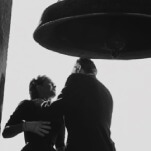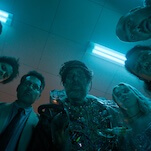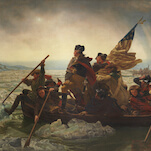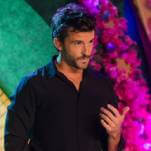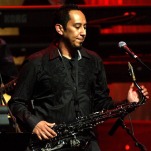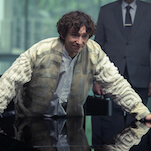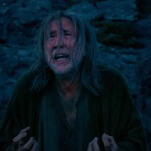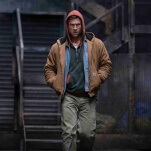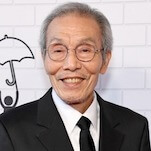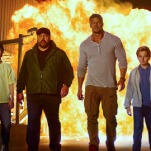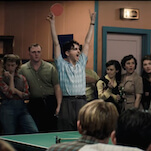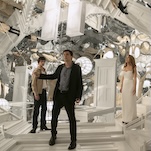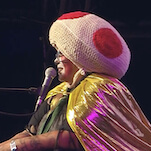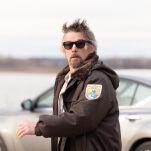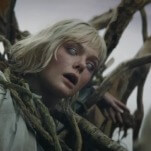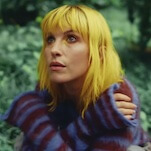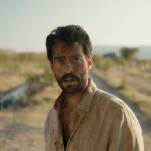How True Detective: Night Country nailed its eerie, icy environment
Night Country's production designer Daniel Taylor walks The A.V. Club through the finale's chilling showdown and season 4's subliminal look
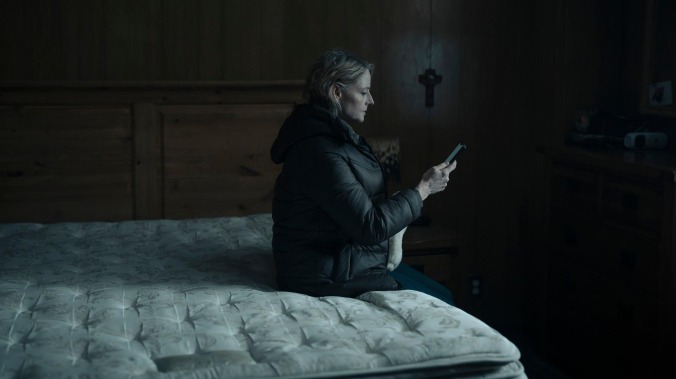
True Detective: Night Country’s vibes are immaculate. Immaculately desolate, icy, and hostile that is, which is just what season four showrunner Issa Lopez and production designer Daniel Taylor set out to achieve with their inky, azure palette. Taylor tells The A.V. Club they wanted the audience to be instantly immersed in the misty, remote world of a small Alaskan town. As seen throughout six episodes, the fictional burgh of Ennis is full of harsh truths, mysteries, tragedies, and weather. The gloominess transcends the screen; it’s hard not to feel a chill down your spine as the dark crimes unfold under a blue tinge. This melancholia also defines Night Country’s central partnership between two detectives who can’t get along, yet they’re each other’s only hope.
Season four of HBO’s anthology, which ended on February 18, is led by Jodie Foster and Kali Reis, who star as officers Liz Danvers and Evangeline Navarro, respectively. The former pals team up after a group of scientists vanish in the middle of the night and are found dead with their entangled, frozen bodies in the snow. Their “corpsicle” ties to a case the officers couldn’t solve six years ago, and since then a dark cloud has haunted Liz and Evangeline’s relationship. It’s a perfect metaphor for the visuals, too. Taylor, whose credits include films like Argylle and Tetris, says he knew he’d have to spend substantial time with this specific world-building when he got the scripts, including mapping out the colors, light, sets, and optimally using the spaces they were in.
“I was filled with trepidation and tension,” he says. “There’s a wave of responsibility because you want to make sure you’re reading it in a quiet environment and are mentally prepared for the story. It’s going to be analyzed, theorized, and watched globally. I was intimidated by what I was about to take on because it was going to be extraordinary.” Taylor says they first narrowed down multiple potential filming locations to Winnipeg, Patagonia, Nova Scotia, and, of course, Alaska. “But we felt in Iceland, there was enough available architecture to match the town we thought we wanted to base our story in.” Season four was shot in Reykjavík, Akureyri, and Dalvík, and in studios where the Nordic landscape was converted to barren, snowy Alaska. With that, True Detective: Night Country’s journey began long before the cameras rolled.
Evoking a spooky visual language amid the icy terrain
Taylor says the idea was to depict a town in the middle of nowhere; the kind where “once the winter comes and the sea freezes, there are no roads, and you can’t get in or out.” Another creepy reference point became a fact he discovered while researching for True Detective: “If you’re not feeling particularly well or expected to live through the winter, in some places, your grave is dug in the summer before the frost comes because [in the winter] they’d unable to do so. It shocked me.” Evidenced by the gutting interpersonal dynamics, it’s clear Lopez and Taylor wanted to flesh out the no-nonsense interactions and layer them with something more intangible and creepy.
“We spent as much time curating the world outside a character’s window, not just inside, limited to what you see. Even if we’ll never take the camera outside, I’ve been mindful to remind the audience about [what might be going on] on the other side of the glass,” Taylor says. “We paid particular attention to the snow, and wind machines, we tried to dress people’s backyards or front gardens to be able to nod to the fact that whatever terrifying event happened to the scientists, it’s still just outside their front door.”
How the season finale’s ‘theme park’ set came to be
The True Detective finale unravels the outcome of the men at the Tsalal Arctic Research Station and its connection to Annie K.’s (Nivi Pedersen) brutal murder. A huge chunk of “Part 6” takes place in the icy caves to depict how she was killed, with Danvers and Navarro spending time in the claustrophobic area in the present day to finally learn the truth. It took about 10 to 12 weeks to construct this set, Taylor reveals to The A.V. Club. The caves also weren’t on a proper soundstage with the usual amenities. “It was an old fertilizer plant that had been renovated for us,” he adds.


